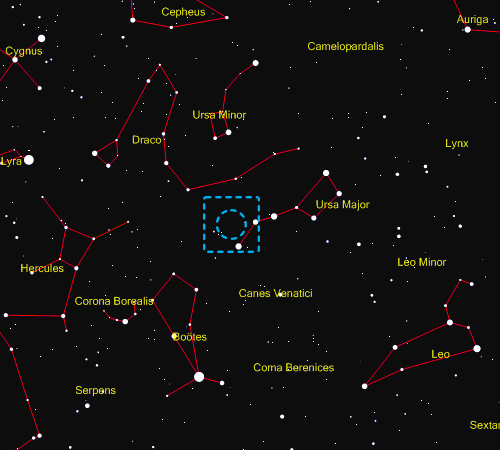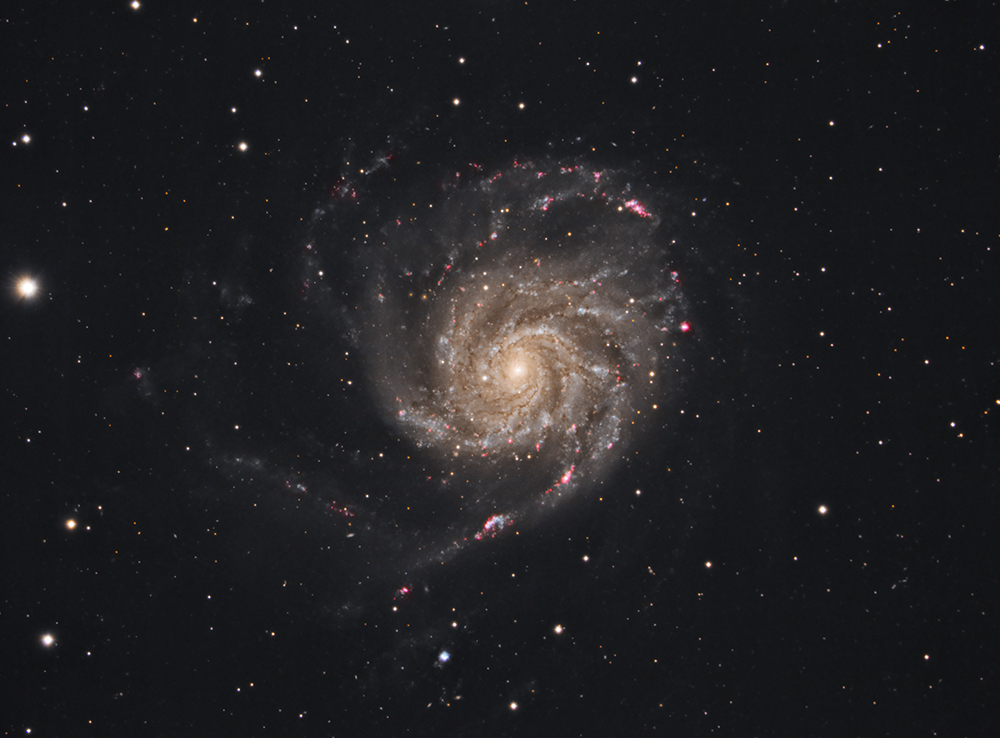Pierre Méchain, the discoverer of M101, described it as ‘a nebula without star, very obscure and pretty large’. The Pinwheel Galaxy is a huge, relatively nearby, face-on spiral galaxy in the constellation of Ursa Major. It is remarkably asymmetric, with its core considerably displaced from the centre of its disk. This and its prominent spiral arms are due to the tidal forces from interactions with its companion galaxies. There are many pinky-red Hα rich star forming regions throughout the galaxy, ionized by the hot, bright, young stars within them. They are capable of creating hot superbubbles, cavities hundreds of light years across blown by stellar winds.
M101 has a linear diameter of around 180,000 light years, nearly twice the size of The Milky Way, placing it among the largest spiral galaxies. The mass of the disk is estimated at about 100 billion solar masses (2 x 1041 kg), very similar to that of the Milky Way. The mass of the small bulge, extending in a sphere around the core of the galaxy, is estimated at about 3 billion solar masses (6 x 1039 kg).
The X-ray source P98, also known as M101-ULX-1, was identified in 2001 as an ultra-luminous X-ray source - a source more powerful than any single star, but less powerful than a whole galaxy. In this image it is located just outside the spiral arm below the centre of the galaxy. In 2005, observations showed the presence of an optical counterpart, indicating that the source is an X-ray binary. It has since been suggested that a rare intermediate mass black hole is involved, but it appears to consume material (including captured stellar wind) at a higher rate than predicted by current theory. In 2011, the type Ia supernova SN 2011fe was discovered, with other supernovae observed within M101 in 1909, 1951 and 1970. |


